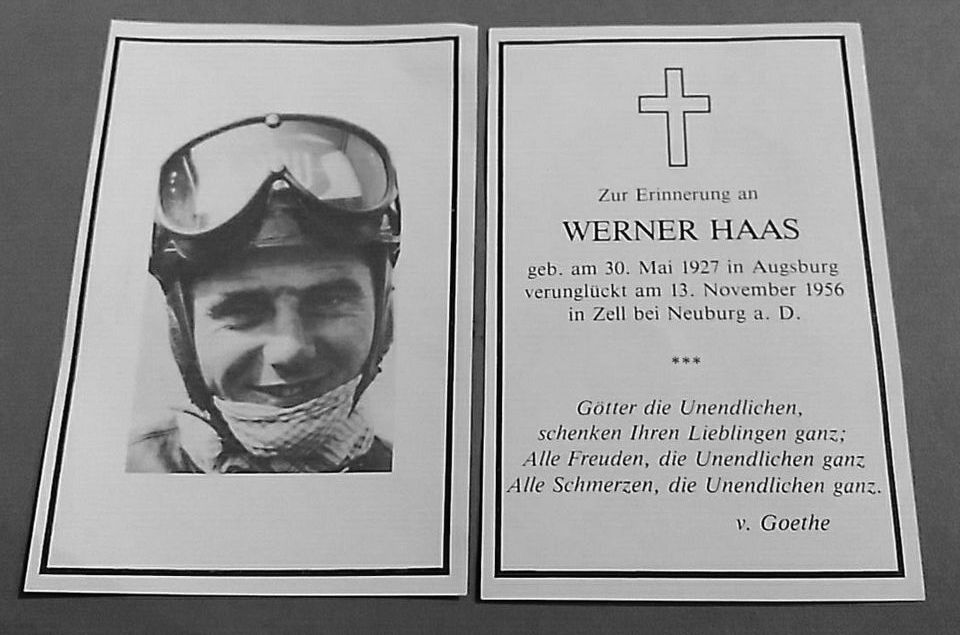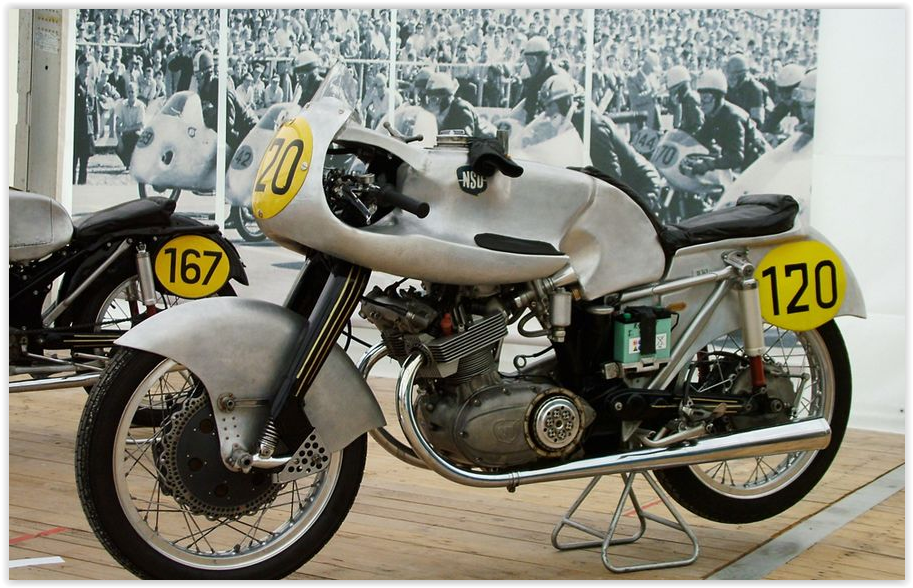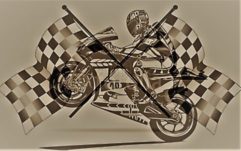
Werner Haas – the 1st German World Champion
Werner Haas saw the light of day on May 30, 1927 in Augsburg as the son of a postman. Before the outbreak of World War II, he trained as a car mechanic in the Post Office’s fleet. After the war he got a job in the US armed forces in the anti-aircraft barracks. The career as a motorcycle racing driver began with an old NSU 500SS (NSU Bullus) at races in the Bavarian region. The well-known Augsburger Ardie dealer (a German motorcycle manufacturer from Nuremberg that existed from 1919 to 1958) Sepp Wiedemann promoted Werner Haas in his younger years. Wiedemann provided him with a 125 cm³ ardie and his workshop. Through Wiedemann’s mediation, Haas also got a job as a so-called “Versuchsfahrer” (today test driver) at the Augsburg plant.
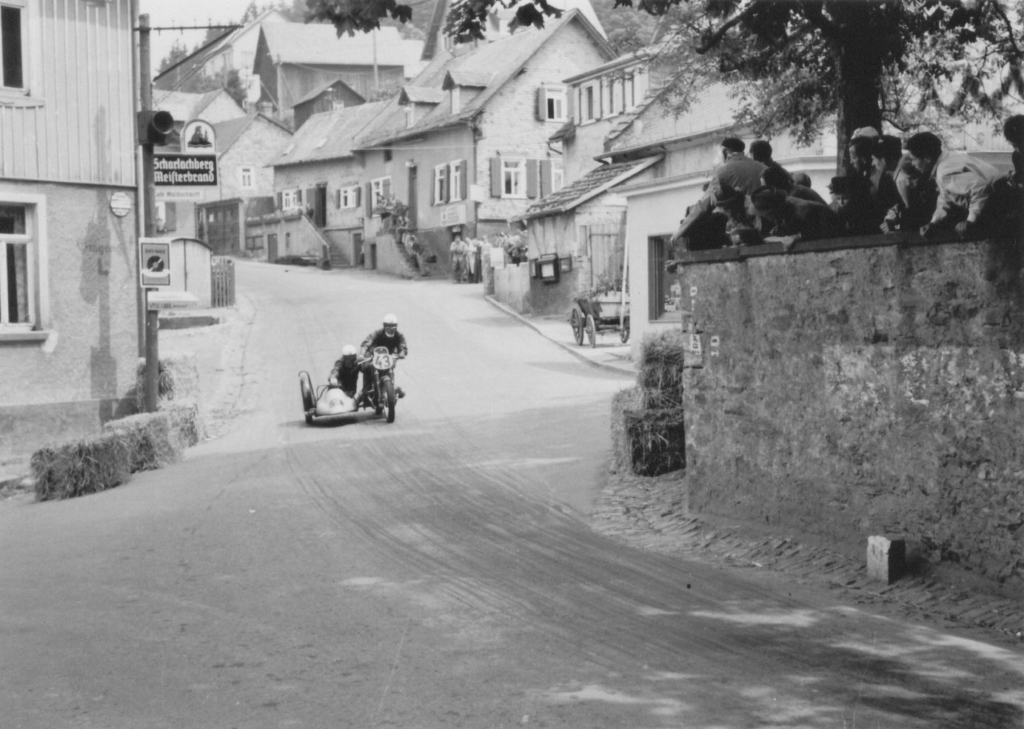
Discovery by NSU in the German championship
After initial successes, Haas started the 1952 season with a 125 cm³ Puch engine in a self-made frame and also showed quite respectable performance with it. As a result, the NSU race management noticed him. When the two works drivers Roberto Colombo and Karl Hofmann were injured during training at the Solitude race in Stuttgart in July 1952, Werner was offered the NSU “Rennfox” (Racefox). The Augsburg resident took advantage of this opportunity and won the race against strong international competition. This was the breakthrough for him, and he was then taken on as a works driver by the Neckarsulmer motorcycle works (the letters NSU were derived from the place name). In the 1953 season Haas started in the world championship. Even if the wording used in (German) Wikipedia “was almost unbeatable in the World Championship” with 2 victories in 7 World Cup races in the 250 class is quite exaggerated. Aber Haas landete mit der NSU Rennmax auf der Isle of Man, beim Ulster GP und in Monza auf Platz 2 und holte sich den Titel. In addition, he secured himself and NSU the world championship on the 125 cm³ Rennfox with 3 wins and 2 second places in only 6 world championship rounds. At the same time he was also German champion in the same classes and won the race in the Solitude again.
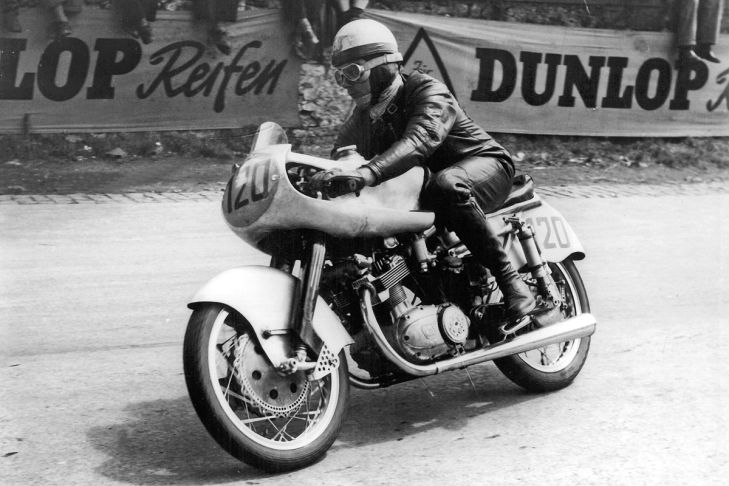
Title defense in 1954
Werner Haas managed to defend his two titles as German champion up to 125 cm³ and 250 cm³, as well as that in the world championship up to 250 cm³. Second posthumously was his team mate Rupert Hollaus (see his short racing career in our history tab), who was also arithmetically the 125 cc world champion at the Rennfox when he had a fatal accident during training for the World Cup final in Monza. With Hermann Paul Müller as third place in the World Cup, the triumph for NSU was complete. In addition, the two Germans Hans Baltisberger (see under our history tab more about the German GP pilot) and Georg Braun came in 5th and 6th behind Arthur Wheeler (Moto Guzzi). The NSU plant withdrew from the World Cup the following year and Werner Like his brother Otto, Haas drove a few enduro races at the NSU Geländemax in 1955 (called off-road races at the time). Im Jahr 1956 zog er sich aus dem Zweirad-Rennsport zurück. He became the owner of a large petrol station and took part in rally races with a Mercedes 300 SL (also known as the “gullwing”).

Early death from plane crash
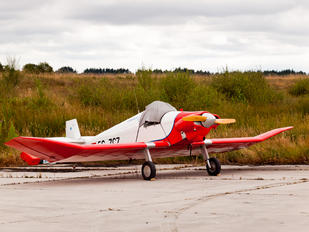
In August 1956 Werner Haas acquired the private pilot license and took off into the air. Aviation was his new hobby and he bought a Jodel D9, which was stationed at the airfield in Neuburg an der Donau. On November 13, 1956, Haas carried out maintenance work on the engine of his aircraft, after which he flew a traffic pattern to test it. At dusk and from a height of only 50 meters, the machine crashed, which Germany’s first motorcycle world champion did not survive. Werner Haas was buried in the Augsburg North Cemetery.
